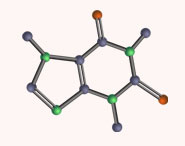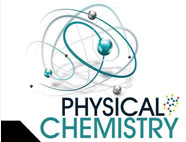


 علم الكيمياء
علم الكيمياء 
 الكيمياء التحليلية
الكيمياء التحليلية 
 الكيمياء الحياتية
الكيمياء الحياتية 
 الكيمياء العضوية
الكيمياء العضوية 
 الكيمياء الفيزيائية
الكيمياء الفيزيائية
 الكيمياء اللاعضوية
الكيمياء اللاعضوية 
 مواضيع اخرى في الكيمياء
مواضيع اخرى في الكيمياء
 الكيمياء الصناعية
الكيمياء الصناعية |
أقرأ أيضاً
التاريخ: 2025-05-01
التاريخ: 16-3-2017
التاريخ: 6-9-2019
التاريخ: 22-11-2019
|
The last nucleophile of this chapter, sodium bisulfite (NaHSO3) adds to aldehydes and some ketones to give what is usually known as a bisulfite addition compound. The reaction occurs by nucleophilic attack of a lone pair on the carbonyl group, just like the attack of cyanide. This leaves a positively charged sulfur atom but a simple proton transfer leads to the product.
The products are useful for two reasons. They are usually crystalline and so can be used to purify liquid aldehydes by recrystallization. This is of value only because this reaction, like
several you have met in this chapter, is reversible. The bisulfite compounds are made by mix-ing the aldehyde or ketone with saturated aqueous sodium bisulfite in an ice bath, shaking, and crystallizing. After purification the bisulfite addition compound can be hydrolysed back to the aldehyde in dilute aqueous acid or base.
The reversibility of the reaction makes bisulfite compounds useful intermediates in the synthesis of other adducts from aldehydes and ketones. For example, one practical method for making cyanohydrins involves bisulfite compounds. The famous practical book ‘Vogel’ suggests reacting acetone fi rst with sodium bisulfite and then with sodium cyanide to give a good yield (70%) of the cyanohydrin.
What is happening here? The bisulfite compound forms fi rst, but only as an intermediate on the route to the cyanohydrin. When the cyanide is added, reversing the formation of the bisulfite compound provides the single proton necessary to give back the hydroxyl group at the end of the reaction. No dangerous HCN is released (always a hazard when cyanide ions and acid are present together).
Other compounds from cyanohydrins can be converted by simple reactions into hydroxy acids or amino alcohols. Here is one example of each, but you will have to wait until Chapter 10 for the details and the mechanisms of the reactions. Note that one cyanohydrin was made by the simplest method—simply NaCN and acid—while the other came from the bisulfite route we have just discussed.
The second reason that bisulfite compounds are useful is that they are soluble in water. Some small (that is, low molecular weight) aldehydes and ketones are water-soluble—acetone is an example. But most larger (more than four or so carbon atoms) aldehydes and ketones are not.
This does not usually matter to most chemists as we often want to carry out reactions in organic solvents rather than water. But it can matter to medicinal chemists, who make com pounds that need to be compatible with biological systems. And in one case, the solubility of bisulfite adduct in water is literally vital. Dapsone is an antileprosy drug. It is a very effective one too, especially when used in com bination with two other drugs in a ‘cocktail’ that can be simply drunk as an aqueous solution by patients in tropical countries without any special facilities, even in the open air. But there is a problem! Dapsone is insoluble in water. The solution is to make a bisulfite compound from it. You may ask how this is possible since dapsone has no aldehyde or ketone—just two amino groups and a sulfone. The trick is to use the formaldehyde bisulfite compound and exchange the OH group for one of the amino groups in dapsone.
Now the compound will dissolve in water and release dapsone inside the patient. The details of this sort of chemistry will come in Chapter 11, when you will meet imines as intermediates. But at this stage we just want you to appreciate that even the relatively simple chemistry in this chapter is useful in synthesis, in commerce, and in medicine.



|
|
|
|
حقن الذهب في العين.. تقنية جديدة للحفاظ على البصر ؟!
|
|
|
|
|
|
|
علي بابا تطلق نماذج "Qwen" الجديدة في أحدث اختراق صيني لمجال الذكاء الاصطناعي مفتوح المصدر
|
|
|
|
|
|
|
العتبة العباسية المقدسة تستذكر سيرة السيدة المعصومة (عليها السلام) وسعة علمها ومكانتها
|
|
|